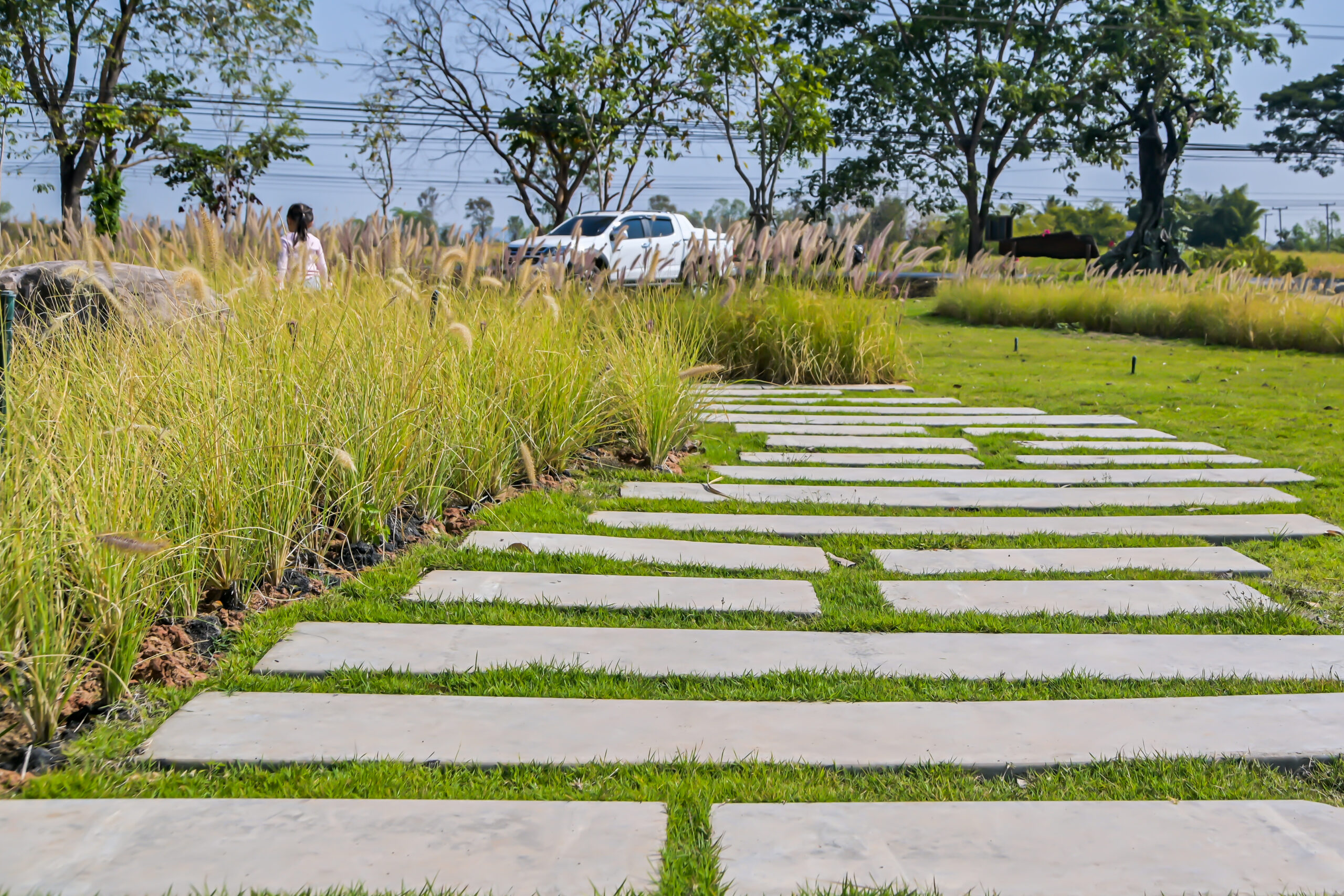Eco-Friendly Landscaping with Pavers: Sustainable Outdoor Solutions

Creating an eco-friendly landscape not only contributes to a healthier environment but also provides a beautiful and sustainable space for homeowners to enjoy. Pavers offer an excellent option for those interested in environmentally friendly alternatives for outdoor living areas. Integrating pavers into your landscaping plan can minimize your ecological impact while maximizing curb appeal and functionality.
The use of eco-friendly pavers can reduce stormwater runoff, increase permeability, and support local ecosystems, all while enhancing the overall aesthetics of your outdoor space. Pavers composed of recycled materials, such as concrete or rubber, are a sustainable choice that can help conserve resources and limit waste. Additionally, maintaining a mindful balance of hardscape and greenery creates the perfect combination to foster biodiversity and create a thriving ecosystem in your yard.
To achieve the best sustainable results, consider incorporating permeable pavers that allow water infiltration and reduce the heat island effect. These pavers allow for natural absorption of rainwater into the ground, reducing the burden on stormwater management systems. By choosing eco-friendly materials and designs, your landscaping project will not only be visually appealing but also a responsible and sustainable investment for years to come.
Assessing Eco-Friendly Materials for Landscaping
As the emphasis on sustainability continues to grow, more people are looking for eco-friendly options for their landscaping projects. This section will explore the benefits and features of eco-friendly materials, including permeable pavers and natural stone, as well as recycled materials that can be used for landscaping.
Permeable Pavers and Their Benefits
Permeable pavers are a popular choice for environmentally-conscious homeowners and landscapers, as they help reduce stormwater runoff and prevent soil erosion. By allowing water to seep through the surface of the paver and into the soil, permeable pavers offer several benefits:
- Reduce stormwater runoff: Permeable pavers reduce the amount of stormwater runoff that can cause flooding or erosion, protecting the surrounding environment and infrastructure.
- Recharge groundwater: The water that seeps through the paver returns to the natural water cycle by replenishing the groundwater.
- Filter pollutants: As water passes through the layers of gravel and sand beneath the paver, pollutants are filtered out, leading to cleaner groundwater.
- Moderate temperatures: The permeable nature of these pavers helps to regulate the surrounding temperature, mitigating the heat island effect that can occur in urban environments.
Some materials used to create permeable pavers include:
- Porous concrete: A mix of cement, water, and fine aggregates that allows water to pass through it.
- Porous asphalt: Similar to standard asphalt but with fewer fines, allowing for water permeability.
- Permeable interlocking concrete pavers: Designed with small gaps between each paver to increase water infiltration.
Natural Stone and Recycled Material Options
Using natural or recycled materials for landscaping is another way to reduce the environmental impact while also offering a unique aesthetic. Here are some popular eco-friendly options:
- Natural stone: Materials like granite, limestone, sandstone, and slate are considered sustainable because they require minimal processing and have a long lifespan.
- Recycled concrete: Crushed concrete from old construction projects can be repurposed as pavers, making it an environmentally-friendly option.
- Recycled brick: Old bricks can be salvaged and reused as walkways or walls, giving them a new life and reducing waste.
- Recycled rubber: Rubber pavers made from recycled tires offer a durable and shock-absorbent alternative to traditional materials.
When choosing eco-friendly materials for landscaping, it’s important to consider factors such as climate suitability, maintenance requirements, and sourcing of the materials. By incorporating sustainable options like permeable pavers and recycled materials, homeowners and landscapers can create beautiful, functional spaces with minimal environmental impact.
Designing Eco-Friendly Outdoor Spaces
When planning your outdoor space, it’s essential to incorporate sustainability and eco-friendly landscaping practices. In this section, we will discuss ways to achieve this through the use of eco-friendly paving materials and smart design choices in patios, walkways, driveways, and paths.
Incorporating Sustainability in Patios and Walkways
To create a truly eco-friendly patio or walkway, consider using environmentally friendly materials and techniques. Some options include:
- Permeable pavers: These pavers allow water to seep through into the ground, reducing runoff and preventing erosion. They also filter pollutants out of the water, promoting a healthy ecosystem.
- Recycled materials: Using pavers made from recycled materials, such as glass, rubber, or reclaimed bricks, can reduce waste and lessen the environmental impact of extracting new materials.
- Native plants: Incorporate native plants in your patio and walkway design, as they typically require less water and maintenance than non-native species.
Eco-Friendly Options for Driveways and Paths
There are several eco-friendly options for driveways and paths that can improve the sustainability of your outdoor space. Some of these include:
- Permeable paving: As mentioned above, permeable paving materials such as gravel or permeable pavers can help reduce runoff and pollution.
- Grass pavers: These pavers are a combination of soil and a grid-like structure which holds grass, offering a ‘green’ alternative for driveways and paths.
- Recycled asphalt: Reusing old asphalt for your driveway can help reduce waste and lower the environmental impact.
Here’s a brief table showcasing some eco-friendly materials for different hardscaping elements:
| Hardscaping Element | Material Options |
|---|---|
| Patio/Walkway | Permeable pavers, recycled materials, native plants |
| Driveway/Path | Permeable paving, grass pavers, recycled asphalt |
By considering sustainability in every aspect of your outdoor space design, you can create a beautiful, functional, and environmentally responsible area that will be enjoyed for years to come.
Water Management and Erosion Control
Eco-friendly landscaping with pavers can contribute significantly to water management and erosion control. In this section, we look at how to effectively manage stormwater runoff and enhance permeability, and the use of pervious surfaces for groundwater recharge.
Stormwater Runoff and Permeability
Stormwater runoff is a significant concern in urban areas, as impervious surfaces such as concrete and asphalt prevent rainwater from being absorbed into the ground. This can lead to increased flooding, erosion, and decreased water quality. To address these issues, landscaping with permeable pavers can be a viable solution.
Permeable pavers are designed to allow rainwater to pass through the gaps between paver stones and filter into the soil beneath, instead of contributing to surface runoff. Some benefits of using permeable pavers include:
- Reduced surface runoff
- Minimized erosion and sediment transport
- Enhanced groundwater recharge
- Improved water quality by filtering pollutants
When selecting permeable pavers, it’s important to consider factors such as the size of gaps between pavers, the type of fill material (e.g., gravel or sand), and the underlying base and sub-base layers, all of which impact overall permeability.
Using Pervious Surfaces for Groundwater Recharge
Groundwater recharge is the process by which surface water infiltrates into the ground, replenishing underground aquifers. Not only does this help maintain overall water balance in the ecosystem, but it can also prevent long-term depletion of water resources.
Incorporating pervious surfaces such as permeable pavers in landscaping projects can significantly enhance groundwater recharge potential. These surfaces not only reduce runoff and erosion challenges, but they also serve as a means for stormwater to infiltrate into the soil, ultimately reaching the groundwater table.
There are several types of pervious surfaces that can be used in eco-friendly landscaping with pavers, including:
- Porous concrete
- Porous asphalt
- Permeable interlocking concrete pavers (PICP)
- Permeable clay brick pavers
When considering pervious surfaces for your landscaping project, keep in mind factors such as aesthetics, durability, cost, and installation requirements. However, the environmental benefits and long-term water management advantages offered by pervious surfaces make them an essential element in sustainable landscaping practices.
Maintenance and Environmental Impact
Care and Longevity of Eco-Friendly Paving
Eco-friendly paving options are known for their low maintenance and long-lasting nature. These options include permeable pavers and recycled materials like rubber, plastic, and reclaimed concrete.
Permeable pavers, such as porous concrete and permeable asphalt, are designed to allow water to pass through, reducing the risk of water pooling on the surface. To keep these pavers functioning optimally:
- Regularly sweep to remove debris
- Perform occasional deep cleaning to prevent clogging
- Inspect the pavers periodically for signs of damage
Recycled materials like rubber and plastic can also be used for paving. These materials are durable and weather-resistant, requiring minimal maintenance. They often have a longer lifespan compared to traditional materials. To maintain these eco-friendly pavers:
- Regularly check for signs of wear and tear
- Keep the surface free of debris
- Replace damaged pavers as needed
Reducing Carbon Footprint and Water Pollution
Eco-friendly paving options not only require less maintenance but also have positive environmental effects, including reducing carbon footprint and water pollution.
| Paving Option | Carbon Footprint Reduction | Water Pollution Reduction |
|---|---|---|
| Permeable Pavers | Lowers greenhouse gas emissions during production | Reduces water runoff, filters contaminants |
| Recycled Materials | Reduces waste and energy used in the production process | Minimizes stormwater runoff |
Permeable pavers reduce water pollution by preventing water from flowing over the surface, carrying pollutants into storm drains and then into the water sources. Instead, they enable water to pass through the pavers and be naturally filtered, thus reducing contaminants in the water.
Using recycled materials for paving lowers your carbon footprint by decreasing the demand for the extraction, processing, and transportation of new materials. Additionally, recycling waste materials reduces their impact on landfills and contributes to energy conservation.






